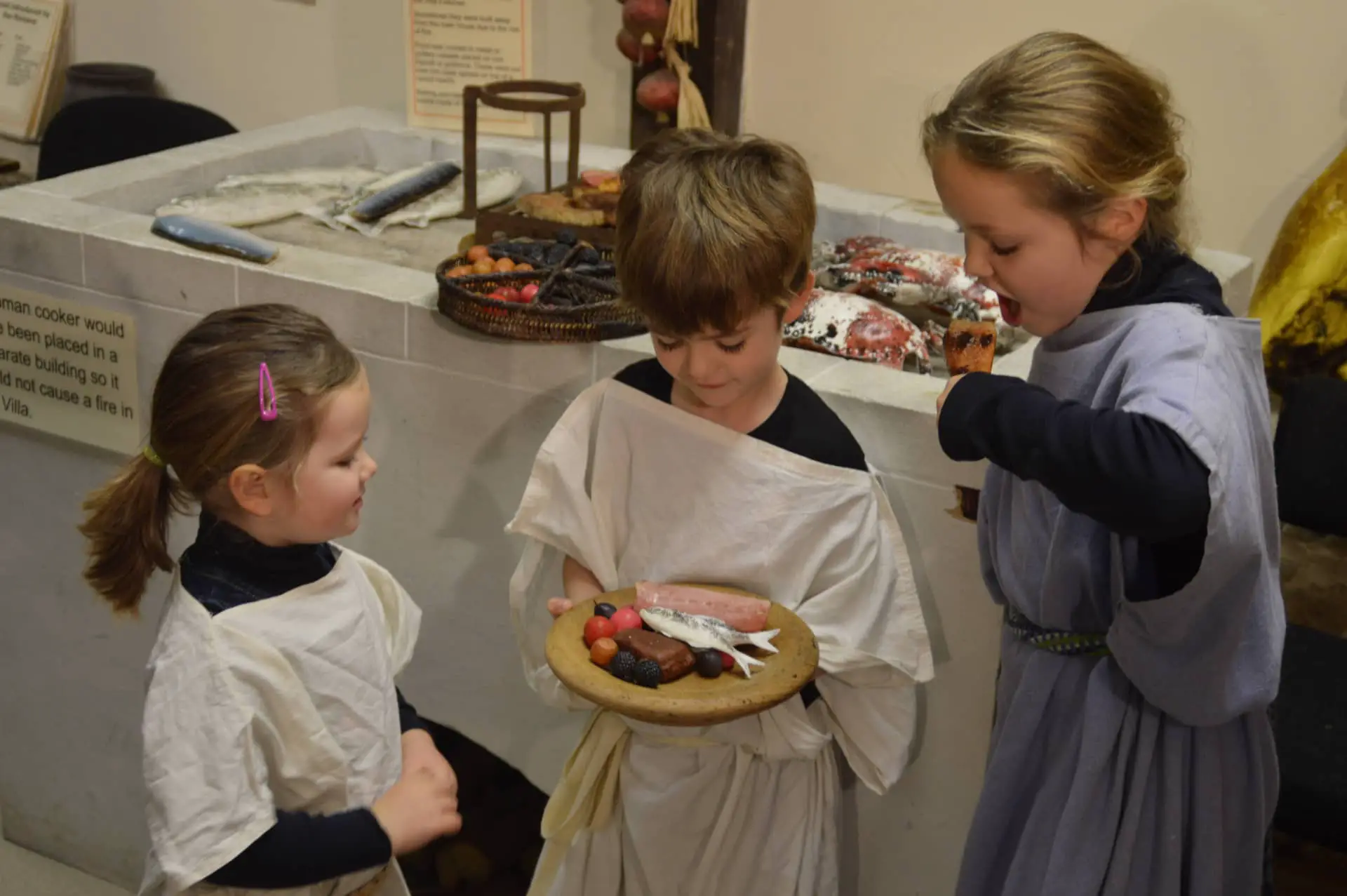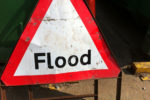Last month (October), on the eve of Hullbaloo, some of those working in the creative and heritage industries on the Isle of Wight came together for the Island Collection’s “We Are Island” Cultural Conference.
The day-long event welcomed speakers from on and off the Island, celebrating culture, creativity, inspiration and prosperity on the Isle of Wight.
News OnTheWight recorded interviews with several of the speakers, which we’ll share with you over the coming weeks.
Museums and Schools
One of those speaking was Richard Smout, the Heritage Service Manager for the Isle of Wight council. Having worked with Richard in the past, we are aware of the amazing work that the Heritage Service do on the Island, but felt that many of our readers may not, so we asked Richard if he was happy to share his presentation.
Below, in his own words, Richard explains about the amazing partnership the council’s Heritage Service has been involved with, called Museums and Schools.
Museums and Schools
Our Island’s museums (and indeed our archives and archaeological services) give us access to the rich, diverse history of the Island. We are privileged to interpret and look after this heritage, holding material which is incredibly rich in its evidence and stories: stories which inform both our current communities and the generations to come.
Our artefacts unlock aspects of the past which inspire and shape the future, providing connections, helping us to deepen our understanding of this Island, its environment and communities. They egg us on to find out more, and so we learn and progress in our own lives.
A strong sense of identity
The Island is a community blessed with a strong sense of identity and an unchanging boundary (even if bits fall off the edge with alarming regularity).
Our history is part of who we are. We are the Dinosaur Capital of the UK, a home of scientists and inventors, artists and writers.
We are not a timewarp, or a backwater, I cannot stress this strongly enough. When Victoria was at Osborne we were at the heart of a global empire. But it is not all glamour.
Our story is very real
We have bred talent, but equally we have cared for the poor and the sick with varying degrees of success. Some of our reputation is built on lives which have gone wrong, on prisons and shipwrecks.
So our story is very real .. it is not all about triumphs, instead it is littered with the mis-steps that every community makes and which, if we learn from them, are part of our growth.
This wealth of history and culture is inspiring .. and to release its full potential these are stories which need to be shared and interpreted ….. and brought into our own age, to unlock their full potential to change lives and make people passionate about this Island.
Pooling our resources
So, some background. Accredited museums on the Island have worked collaboratively for many years. Living on an Island adds to our costs in areas like travel and training.
Being part of that shared community means coming together to pool some of our resources, skills and knowledge, often through our local Museums Forum.
Success of the resilience grant
Some years ago, Lucy Marder in her roles for SE Museum Development encouraged us to think about how this network could develop further. With her support we made a successful application for a £100K resilience grant in 2016.
Working alongside Quay Arts, we carried out an audit enabling us to map and pool our skills, came up with a development plan for the sector, and identified common areas where we wished to grow together.
Hidden Heroes of the Isle of Wight
The exciting visual side of this was an audience development project called ‘Hidden Heroes” where we celebrated some of the amazing figures who have lived on the Island and don’t get the credit that they deserve. (It was no mean feat to get people talking enthusiastically about Arwald, and Isabella de Fortibus).
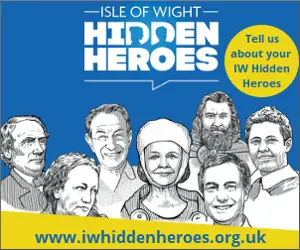
We worked with Simon and Sally Perry, and with partners from Island Arts organisations to explore new ways of building interpretation and activity around the stories that we hold, and it was good to see how it caught the public imagination.
The Island Collection
The development plan – led to the formation of the Island Collection, hosts of the We are Island Cultural Conference, but also brought in an offer from Arts Council England for the commissioning of £62,000 of work yearly to develop the education part of the plan, as part of their Museums and Schools programme and it is this project that I want to talk about now.
We are now in the fifth year of the commission.
The partners are: Brading Roman Villa, Carisbrooke Castle Museum, Classic Boat, Dimbola, the Isle of Wight Steam Railway and the Shipwreck Centre as well as Newport Roman Villa and the Museum of Island History from the council’s own portfolio. The other key component is the Cultural Education Partnership, a cooperative group of museums, schools and cultural organisations, working together to enable young people to access the amazing cultural opportunities on the Island.
Aims of the project
So Museums and Schools is an Arts Council England project using funding from the Department for Education. Its aims are
- To use museum collections and expertise to enhance the national curriculum and support classroom learning.
- To engage with schools in locations classified as areas of high deprivation where engagement between schools and regional museums has been low.
Engaged with engaged with more than 10,000 children
Over these five years we have engaged with over 10,000 children. We have developed new resources, and new lessons including the chance for students to train on a dinghy simulator at the Classic Boat Museum.
We have worked alongside new partners and a wide range of projects. Where museums do not have their own education staff, we have worked together to help them develop an offer, manage their own bookings, risk assessments and on-the-day procedures and then call in someone from a pool of education practitioners to deliver the lessons on the day.
These education providers have tried to reach as many schools as possible. This has been most successfully at primary level.
Targeted three categories of schools
We targeted three categories of schools, those in areas of deprivation, those that have had little engagement with our work, and schools that are closest to participating museums (ideally within walking distance) in an attempt to build sustainable links, and be part of the communities to which they and we belong.
Impact of Covid
Covid is a significant part of the story, as for some time our museums were closed and for a shorter period a majority of students were at home too, the last thing that we were expecting.
This meant that the aim of Museums and Schools to encourage physical visits into our spaces was completely impossible. This totally changed our assumptions about how we would interact with children and their teachers, and encouraged risk and innovation.
Activities based around school’s priorities
Throughout Covid, and ever since, we were careful to ask schools what their priorities were, and in response we developed a range of activities, based on our collections, that could be accessed at home or in the classroom.
We filmed virtual tours of our museums to build a sense of excitement about a future visit. In addition, we gave information about key objects (top treasures) in our collections, and a range of craft activities, which pupils could use at home, or in the classroom, and went into schools where it was safe to do so.
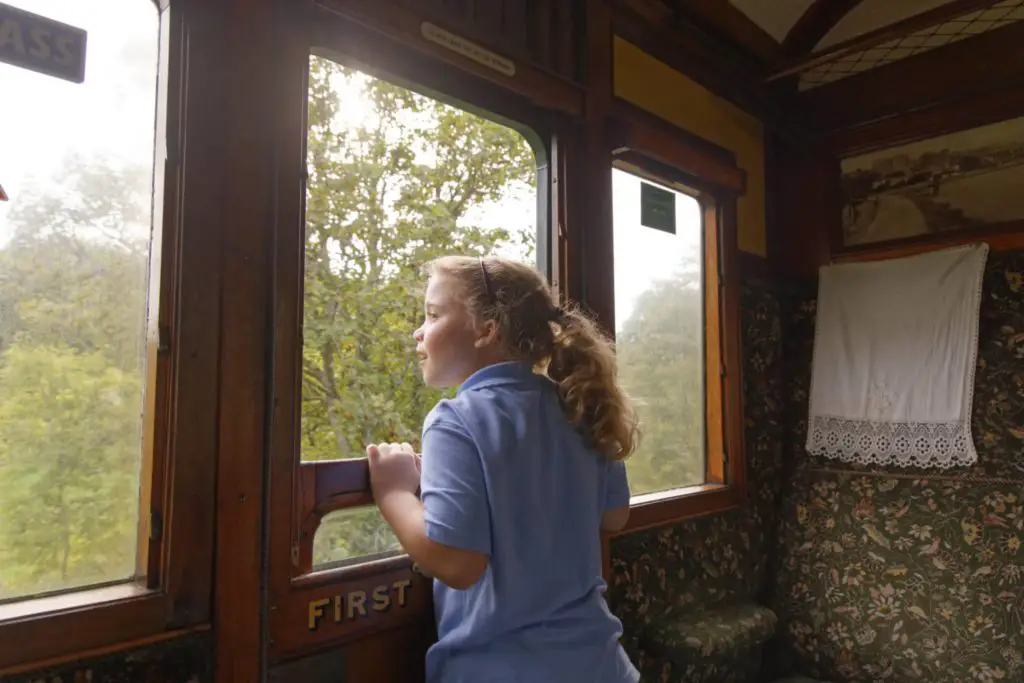
Resources made available to schools
The resources that we developed are made available to everyone through the Cultural Education Partnership (CEP) Website.
We signpost teachers to these resources to support a visit or workshop, and they are available to families and the home-schooled too, ensuring that all will gain the maximum benefit from the work that has been done.
Our own educators produced some wonderful resources and timelines. Lisa Kerley helped us with a guide to oral history for primary schools, full of great tips.
Commissioned artists blow us away
And then we have had / are having an amazing time .. an absolute ball, commissioning artists, who have blown us away with their flair, the quality of what they have produced and their generosity with their time.
Bruce Webb produced an amazing film about the botanical paintings of Emma Dennett at Carisbrooke Castle Museum. Sue Bailey came up with such a great set of ideas for storytelling based on some of our Top Treasures. My personal favourite was called Gull Gossip, getting us to imagine two gulls coming across a hovercraft on its first trial, and swapping notes.
Collaborating with other partners
We have enjoyed working alongside other projects, and partners, such as the New Carnival Company. We have benefitted from the advice of ArtsWork, and now have a range of activities for Arts Award.
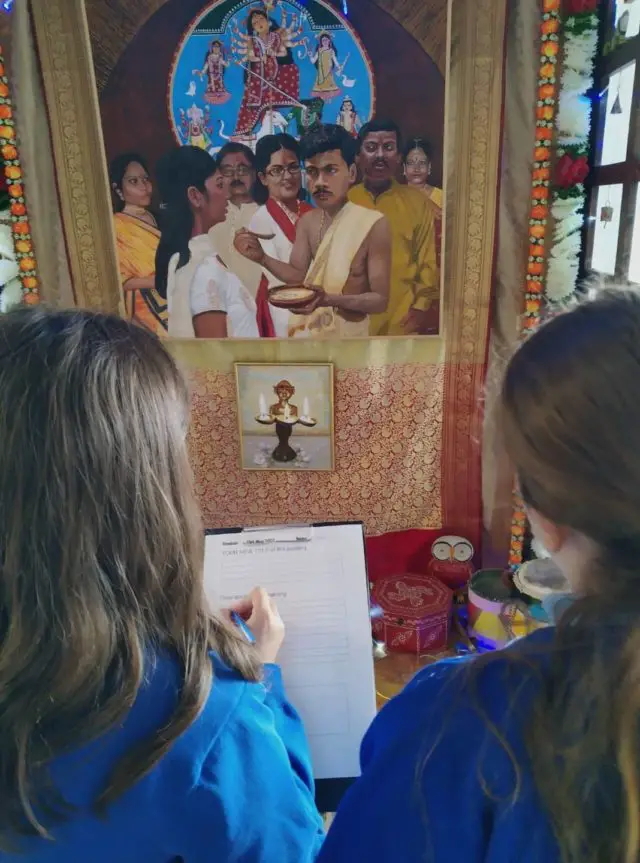
The Creative Biosphere, Crossing the Bar, celebrating the coastal path, and with Creative Cross Currents at Dimbola Museum and Galleries, we were able to look at the links with South India and give children a taste of the multi-sensory richness of that community.
Putting the Island in a global context
It was equally exciting to put the Island in a global context by working with the Earth Museum, commissioning new lesson plans through that platform, using the skills of Janet Owen and her team.
Her links with secondary schools on the Island and beyond have helped inform where our offer should be pitched. Maps of artefacts are arranged by period .. and by themes such as “war and peace in the 20th century”, “childhood”, the Island’s many international links and “science and innovation”.
Telling everyone’s stories
It has been a real privilege to work with Stonecrabs on diversity, helping to ensure that we tell everyone’s story … not just the stories that fit into preconceptions about the Island.
We have a far greater awareness of our awesome responsibility as curators and interpreters, our work is more satisfying, and when we try to tell the whole story things start to make sense in a way that they have not done before.
So that is our story. We have had great feedback from teachers, and from students, and are learning a fantastic amount ourselves. It has been a great experience.
Looking to the future
Going forward – we are looking at the sustainability of the offer.
We want to ensure that our resources, our teaching, and the access we offer to museums has such a benefit to schools that it becomes an integral element to their learning.
Developing our partnerships with the wider community
We are working to ensure that we can do this at a fair and affordable price, and we want to develop our partnerships with the wider community.
We need to look at how we can extend our learning to more heritage sites and create a sustainable service for when the funding ends.
This partnership has been a really effective way of maximising the number of children who are offered the chance to be wowed about our museums and what they can contain, and about their Island.
We hope that in this project we have fired their imagination .. that they are inspired by the Island, and all it has to offer. That enthusiasm, that passion and the skills that they acquire will open up so many opportunities, and help to change lives.

